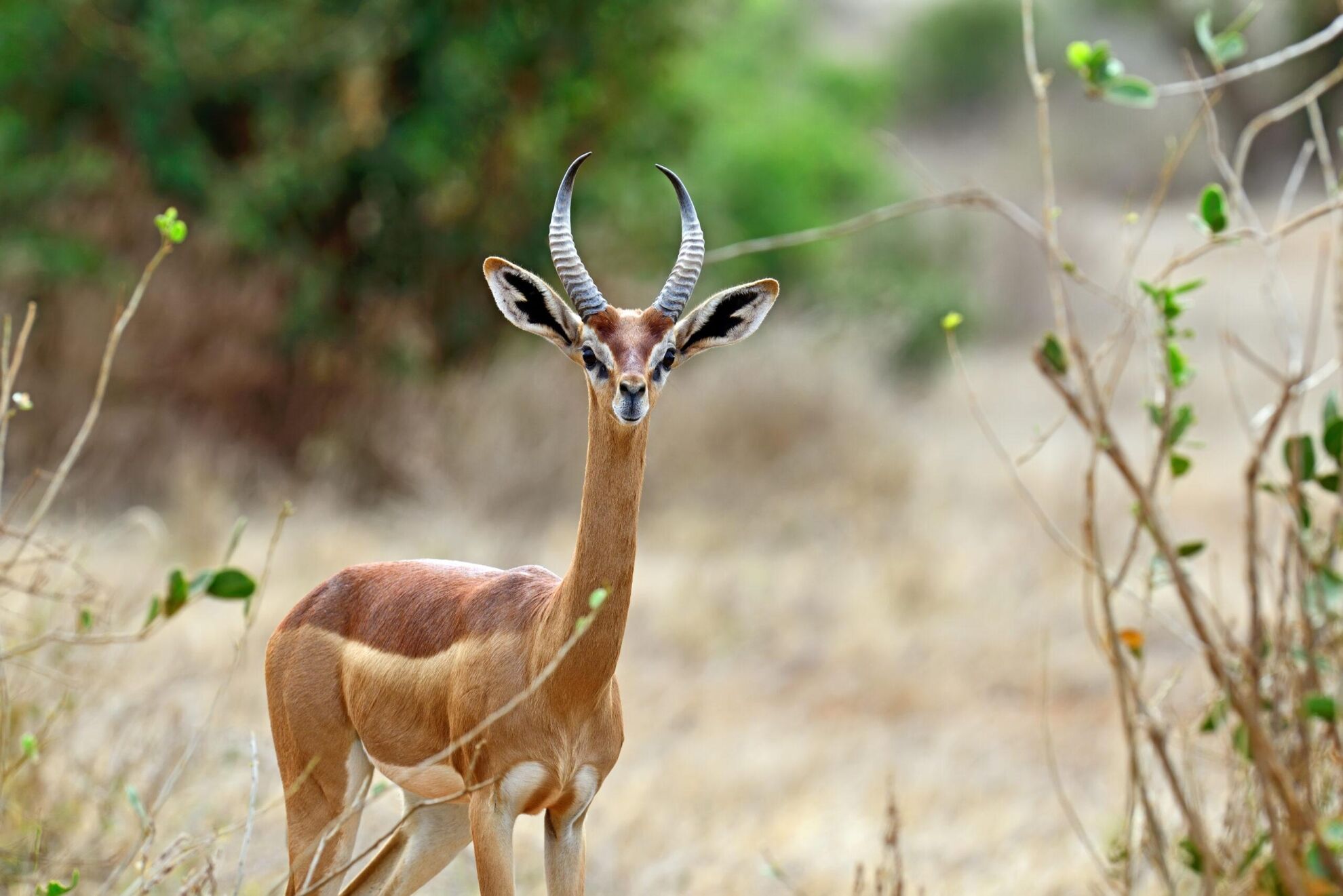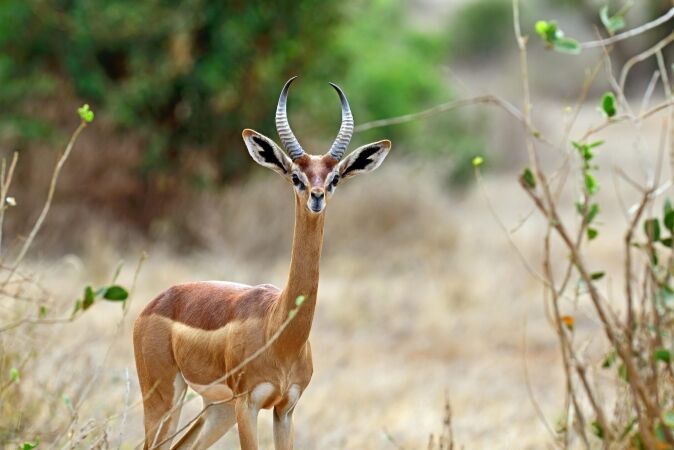

The gerenuk (Litocranius walleri), also known as the giraffe gazelle, is a long-necked, medium-sized antelope found in parts of East Africa. Their unique-looking appearance allows for easy spotting on an African hunt among their chosen habitat of semi-arid brushlands and desert regions. The gerenuk’s numbers are decreasing and it’s listed as “near threatened” by the UICN.
The gerenuk is native to the East African countries of Kenya, Tanzania, Ethiopia, and Somalia. In Somali, the word gerenuk means “giraffe-necked.” Gerenuk are diurnal and live alone or in small herds of five to six members, with the herd members varying in age and sex. Larger groups may form when food is abundant, but these are only temporary groups.
Breeding and births happen throughout the year and factors such as the quality and quantity of food sources play a role. Females breed every year or two, depending on the sex of their previous year’s offspring because males are more dependent on their mothers for longer than female offspring. After a gestation period of about seven months, the female gives birth to one fawn that typically weighs about six pounds.
Gerenuk are browsers. They are herbivorous with their diet consisting of leaves of trees, shoots, herbs, flowers, and fruits. Gerenuk can stand on their hind legs for long periods. This adaption, as well as their long necks, allows them to easily reach leaves on shrubs and trees that other animals cannot.
When on an Africa plains game hunting safari, don’t expect many gerenuks around a water source. Gerenuks are not dependent on water as they get all the moisture they need through the plants they consume. Should there be water, they will drink but amazingly enough, a gerenuk can go throughout its entire life without drinking!While man on an African hunt can definitely be added as a predator, the gerenuk’s natural predators are lions, cheetahs, leopards, and jackals.
When sensing danger, they step into or behind bushes where their coloring allows them to camouflage themselves. They then use their long necks to scan the surrounding areas for threats. They aren’t fast runners and are extremely petite, therefore this hiding behavior remains paramount to their survival.
Name:
Tragelaphus Eurycerus
Weight:
880 pounds
Shoulder Height:
3.5–4.3 feet
Range:
West & Central Africa
Gestation:
9 months
Life span:
19 years
The Gerenuk Has Both Excellent Eyesight and Hearing to Sense Danger and Threats
The unique-looking gerenuk stands out clearly when targeted on an African hunting trip. While on the Africa plains game hunting safari, look out for their long necks and large dark eyes that are a giveaway, while their smooth coat is a reddish-brown over the saddle area with a lighter brown color on the flanks. They have long, thin legs. Only males have lyre-shaped horns that can reach 10-17.5 inches long. Males use their horns to defend their territories against other males.
These animals are shy, nervous, and easily excitable, making them a challenge to hunt. The best option for generuk African hunts is to target them using the walk-and-stalk method.
The petite gerenuk is certainly one of the more unique-looking animals that can be found on an African hunting trip, this simply makes the game hunting experience even better as they are both easy to spot in their chosen habitat plus their characteristic camouflage trick gives the hunter a few seconds to ready himself before taking the perfect shot!
The same rifle you would use on your plains game safari will be suitable for a gerenuk African hunt. Any caliber from a .270 to the 30-caliber range will work. Gerenuk hunting requires a rifle with an excellent quality scope for this plains game specie. A .375 loaded with a 300-grain solid is also suitable.
Search from our range of Hunts across various popular destinations in Africa.
Find A Hunt